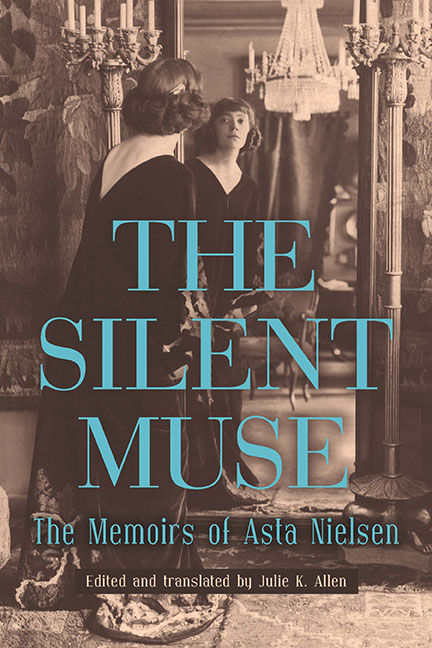Introduction
Published online by Cambridge University Press: 16 July 2022
Summary
Although she only ever visited the United States once, for an inadvertent six-month stay in New York City in the middle of World War I, the Danish silent-film star Asta Sofie Amalie Nielsen (1881–1972), who grew up in Malmö, Sweden, and Copenhagen, Denmark, embodied the American dream of a self-made woman. Raised in urban poverty owing to her father's chronic disability, Nielsen fought fiercely to become a theater actor, achieving modest success onstage in Scandinavia in the 1900s and considerably more in Germany in the 1920s and ’30s. While impressive, however, becoming an actor is not a particularly unusual accomplishment, nor does it explain why Asta Nielsen's picture was hung in soldiers’ barracks on both sides of the conflict in World War I, her name attached to hairstyles and menu items from Bangkok to Brisbane, and her praises sung by contemporary critics and modern scholars. To understand why Asta Nielsen became world-famous and remains historically significant, we need to look to her phenomenal contributions to the early film industry and her success at elevating the new medium from the fairground to high art. Through her seventy-two multireel narrative feature films, made in Denmark and Germany between 1910 and 1932, “Die Asta” became one of the first global stars of early film with a legacy of innovative, influential work, though her name is hardly remembered in the English-speaking world today.
Nielsen's is a rags-to-riches story of astonishing success achieved through talent, grit, and good timing: when she made her first film, Afgrunden/The Abyss (1910), which ran for an audacious forty-five minutes, she found herself on the leading edge of the wave of multireel feature films that would soon replace short films as the program standard. To some extent, Nielsen was just lucky to be in the right place at the right time, a gifted actor eager to make her mark just as the new technology of filmmaking matured enough to tell serious, extended stories. From her first film, with its melodramatic pathos and sensational gaucho dance, Nielsen went on to take the world by storm, astonishing audiences with the expressivity of her huge dark eyes, the versatility of her mobile face, the eroticism of her fully clothed body, and the consistent courage of the ethnically and socially diverse characters she played.
- Type
- Chapter
- Information
- The Silent MuseThe Memoirs of Asta Nielsen, pp. 1 - 16Publisher: Boydell & BrewerPrint publication year: 2022



